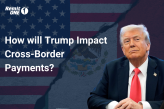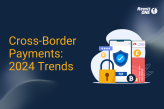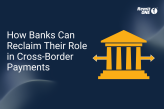Video: Better Together – Building a New Global Standard for the Remittance Ecosystem July 21, 2021

Continuing our recent discussions exploring the challenges being faced by the remittance sector in the wake of the COVID-19 pandemic, RemitONE hosted a webinar on the 23rd of June 2021. The 90-minute conversation centred around the concept that in order to “build back better” after the pandemic, the money transfer sector needs to work together to create a new global standard. The panel was made up of experts from both RemitONE and our friends and partners in other global companies. In case you missed the webinar, here is a summary of the key insights.
Webinar moderator:
- Oussama Kseibati, RemitONE
Panellists:
- Hugo Cuevas-Mohr, CEO at Mohr World Consulting
- Sidharth Gautam, Head of Sales at AZA Finance
How significant is the remittance industry and who are the traditional and new players in the remittance ecosystem?”
Hugo Cuevas-Mohr: I’ll begin by defining what remittances actually are. The term remittance implies a family member sending money to other family members, for example. Remittances for the world bank, meanwhile, are only considered “worker remittances”, so the money transferred between family members is around 650 to 700 billion dollars per year of recorded remittances. On the world trading stage, of course, this number would not be extremely significant, but it is important to understand that this is higher than the investment from one country to another. It is also much higher than the aid that developing countries receive, so the significance is relative to different countries. In terms of significance, it varies depending on the development of the country. By comparing the remittance figure to GDP you can see that some countries are at 30% to 35% of their GDP, which is the case in Nepal and Haiti, for example. Interestingly, by contrast, big countries such as China and India will undoubtedly have high volume, however, there is less significance as the GDP is low. Another comparison is the population: if you divide remittances by the population of the country, then you can determine the significance of the remittance ecosystem based on each average individual in that country. Using this logic, Lebanon is number 1 in terms of significance, as it is a small country with a small population and a huge amount of money every year. This same principle can be applied to towns as well.
Sidharth Gautam: I completely agree with Hugo. In fact, in a few south sub-Saharan countries, remittance is essentially their backbone. There is a word developed by the World Bank called LMIC: “Low and Medium Income Countries.” Remittance is incredibly important for LMICs. Their entire country arguably depends on them.
Hugo Cuevas-Mohr: Adding to that point, remember that money goes to the lower fourth or the lower fifth of the economy. Remittances are also an important backbone for poor families in LMICs, therefore they are a really important “backbone” for them. Regardless of how those poor families spend the money, it doesn’t change the fact that they depend on remittances to survive. Indeed, sometimes 60 to 70% of a poor family’s income is primarily derived from remittances.
Who are the traditional and new players within that ecosystem, focusing on the traditional versus new and formal versus informal?
Hugo Cuevas-Mohr: It depends on a few things. In remittances, there’s always a sending market and a paying market. With regards to the pandemic, there was a small decrease in certain countries, particularly if they depended on Europe. However, if they depended on the United States you actually saw an increase, which was completely unexpected. The traditional sending players have always been agent-based, so brick and mortar operations were affected negatively in the early part of the pandemic as people couldn’t visit those agencies. As a result, every new digital player saw an increase. The more digital the payment; the higher the remittances would be, for example in Africa, mobile money companies saw an increase in sales during the pandemic due to the fact that remittances landed in mobile wallets. So we have seen transformation, however, I think it is too early to tell what will change and what will stay the same as traditional companies are evolving.
Oussama Kseibati: In the past, in traditional Asian markets cash has always been king. But over the past 10 years we have seen innovation being brought into the market and a move towards digital that has been hastened by the pandemic. I think as we get to the second and third generations that are more innately familiar with new technology, things are only going to get better.
How do you think we can enhance payments through successful partnerships and working together?
Sidharth Gautam: Partnerships are absolutely critical. No one organisation can facilitate change by itself; it has to be a concerted effort. We all have our core competencies, so the best practice should be to focus on these competencies and then align with partners who have a laser sharp focus in another particular area. AZA Finance is a firm believer in that, and our partnership with RemitONE is proof. It’s a natural combination of one plus one rather than automatic progression. That way you can start to create an ecosystem of consumers, brick and mortar agents, digital companies, aggregators (AZA) and technology, providers like RemitONE. All of these players have come together to give a seamless, end-to-end experience to the consumer. There is no point in reinventing the wheel but we have to drive meaningful and coordinated change at a global level over a sustained period of time to make it happen.
Hugo Cuevas-Mohr: Sidharth is right on the money. It maybe even as recently as a year and a half ago, partnerships in this space weren’t really stories but it’s booming now. You have to understand that traditional companies did everything on their own and always built their own systems, distribution, networks and compliance. But that’s the old way of doing things and for some companies, it can be difficult to break the habit. There are so many legacy remittance systems right now, and sometimes it might be best to just scrub the old system entirely, salt the earth and start with something fresh. Realise what you’re good at – the thing that makes you different, and work with partners to fill in the gaps. Also, remittance is one financial service and there are many other financial services the same customers need, so you have to integrate those services. Unless you want to do all of that yourself, which becomes rather complicated, it’s always better to partner with a company that has the right knowledge and resources. The new breed of digital banks are all being built on that more modular way of thinking.
How does one foster a good working partnership?
Hugo Cuevas-Mohr: In our industry, the important partnerships that we have is with the banking sector and sometimes we forget that. It’s been hard in some markets to build good banking relationships and now you’ve also got cryptocurrency and the new wave of digital banks to deal with too. You need to create that banking partnership to provide that flow of funds in the collecting and disbursement sites and if you are cross-border you’re also dealing with foreign exchange, so you need to be able to be very good at managing currencies. How that partnership is able to exist and survive is all about transparency; sitting down and being honest with each other – what you need, what you’re willing to provide and how that partnership is going to be organised.
Sidharth Gautam: We are the biggest non-bank currency provider in Africa and apart from Southeast Asia, Africa is one of the biggest remittance receiving markets in the world. So we get a lot of requests from small and medium-sized MTOs that want to expand into Africa but lack the knowledge and the data to do so. They don’t have those resources like the big larger MTOs where they can hire a market research team and that is where the partnership comes into play. So, not only do we give them an aggregator and last-mile liquidity but we also help them with Google Analytics, for example. I feel like marketing is where you explore the unexplored and it takes a partnership to the next level. That’s where long-term relationships get forged.
How can you sort a good partnership from a bad one?
Sidharth Gautam: It is very clear to me what my core competencies are and where I can leverage somebody else’s competency. It’s both a mix and a marriage between two equals and it has to be built on a common remittance platform for everybody. There are always going to be challenges. We are a regulated industry so you can’t just partner with anybody. You need to be very clear as to whether or not your partner is certified and that is the basis of any partnership in our business. Remittance is a very fragmented industry – the top three players have major market shares and yet every day you see new players coming up, primarily in the digital space where you can launch in the space of a few months. So there are lots of little guys scrambling for attention that might not be on the same page as you from a regulatory perspective. So do your research. What you also need to see is how potentially scalable that partnership is. For a successful partnership, it is important to understand not only your core competencies but what you want to achieve by having that partner on board and where you want to end up.
Oussama Kseibati: I agree. In fact, I’ve known companies in the past that have chosen certain providers they want to grow their business with but because they’ve used a certain tech provider it’s very hard for them to now uproot their whole business and take clients over to a system that they can scale. Again they’ve gone with someone who’s slightly smaller or built their own system and it causes more headaches further on down the line.
Hugo Cuevas-Mohr: Partnerships sometimes don’t work. And that’s fine. Sometimes I speak with companies and I have to be quite philosophical about it and say that sometimes it works and sometimes it doesn’t and you can’t really put a finger on why. Also, companies change and you have to be flexible to see where the market, takes you. Maybe you need to get rid of a partnership because you’re going in a different direction? So flexibility is something that you must have in this market. The pandemic has arguably made it even harder for everyone to plan for the long term, so you need flexibility about how you set up your structure. Flexibility is part of the game in everything we do these days. Even as people we need to be flexible enough to adjust to new ideas and new possibilities.
What are the developing trends in our ecosystem and what is RaaS?
Hugo Cuevas-Mohr: Remittance as a Service (RaaS) is so interesting because it has been such a long time coming. It is essentially an all-in-one solution that allows companies to launch money transfer software services from any particular geographic location. How does it work? Let’s say you have a good brand in Southeast Asia or in Africa and you want to do business in the UK. Maybe you can put your own brand in a product like an app or a mobile wallet and it is your image but using a third-party service. That’s the deal – I give you my brand and we do a partnership together, all those remittances come to me but to my client in the UK or in Europe, it’s the brand they’re interacting with. You’re behind the scenes. It’s really going to change the market. What all regulators want is better service and lower cost; a more compliant remittance system and this could definitely give them that.
How can remittance fix the gig economy, and how should we participate?
Sidharth Gautam: That is my favourite question so far! We are all are so used to hearing this word, “gig economy,” but what actually is it? Let’s talk stats. As of 2020, 1 in 10 people in the UK is employed by this “gig economy,” the equivalent figure in the US is around 8%. By 2024, one in four people, which is 40% of the workforce, will be in the gig economy and how can remittance solve the problem? Let me give you a real use case: An Uber driver in the UK gets paid directly into their bank account, which is fine, of course. Now, let’s shift this problem to Africa, or Tonga or some other nondescript, sub-Saharan country where almost one-third of the population doesn’t have a bank account. How do these Uber drivers get paid? That is where this whole idea of mobile money and digital wallets comes into play. That’s what the gig economy is doing and up until now either these people are getting left out or the bank charges are not transparent and it takes ages for these guys to get paid. In the US and the UK, you do a transfer today from the UK and it’s in the US account the next day. But for Africa, it can take a week. I mean, it depends on the intermediary bank that might have its own checks charges but also, in certain parts of Africa there is one soft currency for seven countries and the banks of those seven countries don’t talk with each other. That is where organisations like ours play such an important role in the gig economy, helping these people get the money, faster and quicker because that’s the way forward.
For more information or to request a free consultation with one of our money transfer specialists, please email marketing@remitone.com
Related Posts
-

How to Build a Leaner, Smarter Money Service Business in 2025
In an era of rapid regulatory change, rising customer expectations, and digital disruption, how can money service businesses (MSBs)—companies that…
May 22, 2025 -

Trump’s Threats to Cross-Border Payments: What It Means for Your Business
It’s been a short while since Trump stormed back into office, and he’s already shaken things up with his hard-hitting…
May 22, 2025 -

Unlock Faster, More Secure Payments with RemitONE’s Open Banking Solution
We’re excited to introduce the latest enhancement to our RemitONE Money Transfer Platform: the RemitONE Open Banking Solution. Competitively priced…
January 31, 2025 -

How to Expand Your SEND Operations in the UK and Europe—Without the Regulatory Hassle
The remittance market in Europe is valued at €133.7 billion annually, with the UK market contributing an additional £23 billion.
January 31, 2025 -

The Top 5 Cross-Border Payment Trends That Shaped 2024
What a year it’s been for the world of payments! From breakthroughs in tech to surprising shifts in consumer behaviour,…
December 19, 2024 -

How Banks Can Reclaim Their Role in Cross-Border Payments with RemitONE
Banks, once the cornerstone of international payments, are finding themselves sidelined. Senders and receivers have now joined forces, pushing banks…
December 18, 2024